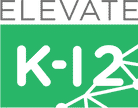Taking part in an American exchange program is a fantastic way to expand your worldview, enhance your skills, and experience a different culture. But before planning your trip, you’ll first need to get a J-1 visa. This official document is a vital form of verification that allows you to study or work in the United States.
Here’s everything you need to know about the J-1 visa, its requirements, and how to apply.
What Is the J-1 Visa?
The J-1 visa is also referred to as the exchange visitor visa or student visa. It’s a nonimmigrant visa designed for individuals who want to study or work in an approved exchange visitor program in America.
Although the J-1 visa is often nicknamed the “student visa,” there are actually 14 exchange visitor categories. If you fall into one of the below roles, then you could be eligible for a J-1 visa:
- Au pair
- Camp counselor
- Government visitor
- Intern
- International visitor
- Physician
- Professor or research scholar
- Short-term scholar
- Specialist
- College student
- Secondary student on a cultural exchange
- Summer work travel
- Teacher
- Trainee
The period you can stay in the U.S. on your J-1 visa will depend on the category you fall into. University exchange students, for example, can remain in the U.S. for the full academic year. For research scholars, it can be up to five years. On the other hand, summer interns receive a short-stay visa that matches the duration of their work period.
J-1 Visa vs. F-1 Visa: What’s the Difference?
Potential exchange students may wonder whether they should apply for a J-1 Visa or an F-1 visa. While they may seem similar, the two have some striking differences.
Most prominently, the J-1 Visa is a nonimmigrant visa application aimed at students, academics, and individuals looking to study or work in the U.S. on an exchange program.
The F-1 visa, on the other hand, is designed for students who wish to pursue full-time academic study, like obtaining a bachelor’s degree, at a U.S. college or university.
Here’s a deeper look at the differences between the two.
- Form submissions: Individuals applying for a J-1 visa must submit a DS-2019 Form, which we’ll explore in more detail below. Students applying for an F-1 visa must submit an I-20 form, which verifies that they are enrolled to study in the United States.
- Post-graduation extensions: If you obtain a J-1 visa as a student, you can apply to stay in the U.S. for Academic Training (AT) for up to a year and a half after earning your degree or PhD. F-1 visa students who have graduated can apply to work for a further year (or two, in the case of STEM degrees) in the U.S. on the basis of Optional Practical Training (OPT).
- Dependents: Many J-1 visa holders’ family members are allowed to work and/or study in the U.S. without limits as long as they have a J-2 visa. F-1 students’ dependents, on the other hand, are not allowed to work but are eligible to enroll in part-time study.
- Funding: J-1 students must be at least 50% funded by an institution accredited by the Department of State. F-1 students can fund themselves.
- End of program: If a J-1 student has not secured an extension, they must return to their home country within a month of their program’s expiration. They will then need to live in their home country for at least two years before returning to the U.S. F-1 students must return to their home country within 60 days after their program finishes, but there is no restriction on when they can return.
Essential J-1 Visa Requirements To Know
If you’ve found a program you want to enroll in and think J-1 status is right for you, you must meet the following requirements.
Education and Experience
The educational and professional experience you need will depend on the J-1 Visa category you are applying for.
For example, au pairs must be between 18 and 26 years old and have a secondary school level education, while short-term scholars must have a graduate degree. You can take a closer look at the requirements for each category here.
Funding
One of the main requirements of the J-1 visa is sponsorship. Your program must be at least 50% funded by a U.S. government-accredited sponsor, which can be a public or private institution.
You will need to find a sponsor independently, but you can view the full list of accredited sponsors here.
Health and Insurance
There is also a mandated list of health insurance requirements, which you and your dependents will need to meet, if applicable.
- Medical benefits of at least $100,000 per illness or accident
- A deductible of $500 or less per accident or illness
- Medical evacuation expense coverage of $50,000
- Repatriation of remains coverage of $25,000
- Coverage of pre-existing conditions after a reasonable waiting period
- Co-payments of no more than 25%
Valid Passport
You and each of your dependents will need a valid passport to enter the U.S. You will also need to show proof that you plan to return to your home country at the end of your program.
Once your program ends, you will need to return to your home country and live there for at least two years before returning to America, unless otherwise stated in your program’s terms and conditions.
English Proficiency
All J-1 visa program applicants will need to meet a designated English language proficiency score. Acceptable testing methods and scores vary by program, so you must check your program’s requirements for details.
Sponsorship and DS-2019 Form
Once you’ve secured a sponsor and enrolled in a program, you’ll need to fill out form DS-2019, which your designated sponsor will share. This form is essentially your certification of eligibility for an exchange program.
How To Apply for a J-1 Visa
The J-1 visa process will differ slightly depending on the country you are applying from. So, we recommend consulting your country’s U.S. embassy to learn about specific requirements.
Broadly speaking, though, the J-1 visa application process follows the steps below.
Locate a Program Sponsor
As discussed, once you have found a program you wish to complete, you will need to locate a sponsoring organization based in the U.S. to fund it. Once your application is approved, you can move on to the next step.
Fill out the Online Application
Your sponsor will send you a DS-2019 form, which is your certificate of eligibility for the exchange. In addition to completing this document, you will also need the following required documents as part of the online application process:
- DS-7002 form (for exchange visitor trainees or intern visa applicants)
- DS-160 form (Online Nonimmigrant Visa Electronic Application)
- Valid passport
- One 2×2 photograph that meets these requirements
You may have to provide further documentation during the application process, so read all instructions closely to ensure you’ve met all the requirements.
Note that processing fees are also associated with the J-1 application, which will vary depending on your sponsor and program.
Prepare and Complete the Visa Interview
Once you’ve completed your application, the next step is to contact your country’s U.S. Embassy for an interview. We recommend doing this quickly, as waiting times can be lengthy, depending on the country.
When you attend the interview, the consular officer will ask questions to determine why you want to travel to the U.S., such as:
- Why did you choose this field of study?
- What are your career aspirations?
- Why have you selected this exchange program in particular?
As a side note, remember to bring the following documentation to your interview:
- A valid passport
- The photo you will use for your visa
- Confirmation that you have paid any necessary fees
Seek Assistance When Necessary
Undeniably, navigating the J-1 Visa applicant process alone can be overwhelming.
With so much required documentation and several variations by country, it’s wise to seek support from experts with deep knowledge of the U.S. visa application process. Your sponsor, a legal advisor, an educational consultant, or your country’s U.S. embassy can help here.
Begin Your J-1 Visa Journey With Confidence
Acquiring a J-1 visa opens an incredible door of opportunity to work and study in the U.S., but application mistakes and errors can undermine your eligibility.
While the application process takes time and effort, the hard work is worth the reward. So prepare thoroughly, read through all documentation carefully, and put your best foot forward in your interview.
Doing so will put you in the best position to start your exciting U.S. adventure.

